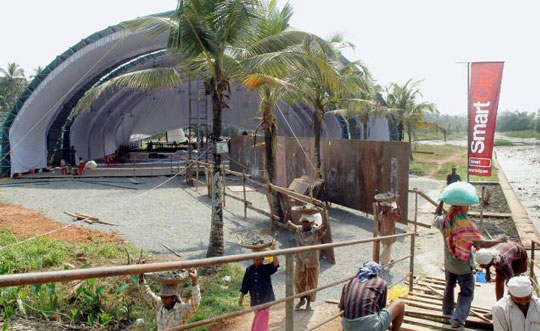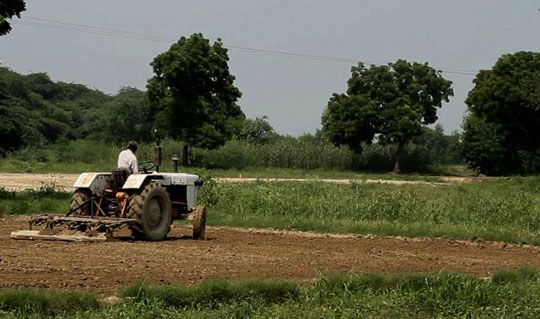
Last week, the government of India announced the names of the first 20 cities slated to become ‘smart’. These are the winners of the recently concluded ‘Smart City Challenge’.
The government claims that smartening the cities will make them inclusive and sustainable, through the adoption of ‘smart solutions’. In one city, plans include a digital operating system to connect all utility service provision and sending automatic reminders to officials to put out tenders at the imminent arrival of the dengue season.
Consistent with the wider global discourse on ‘smart’ cities, in India urban problems are constructed in specific ways to facilitate the adoption of “smart hi-tech solutions”. ‘Smart’ is thus likely to mean technocratic and centralized, undergirded by alliances between the Indian government and hi-technology corporations.
‘Challenges’ and ‘solutions’
Obviously these ‘smart’ solutions will require large bulks of financial capital. Plenty of such capital seems to be available, however, in a world where the richest 62 people own more wealth than the poorest half of the global population. A significant proportion of this wealth is in need of profitable investment opportunities, like a hammer in search of nails. And, under Prime Minister Modi, India’s fast growing urban economy is apparently an easy one to nail.
Some of this idle global capital will flow into India, and be eagerly lapped up by the 20 new ‘smart cities’. The same capital is likely to have played an important role in shaping the policies behind the Smart City Challenge itself – not least through reports prepared by the likes of McKinsey Global Institute and PriceWaterhouse Coopers.
As usual, capital will demand handsome returns on investments. These will come, at least in part, through service charges paid by residents of the new smart cities, apparently including a nominal fee charged to slum dwellers for “improved services”. The same slum dwellers will pay for the smart city in other ways, including the loss of their homes: slum land is likely to be acquired first for smart projects. Peri-urban farmers will probably be next.

Peri-urban farming in Delhi. Photo: Speak-IT films/STEPS Centre
In sum, ‘smart’ appears to be a strategic alliance between technology-oriented large corporations, global finance and Modi’s national government. The promise of technology and investment has now made ‘smart’ the pipe dream of many a municipal authorities in India.
But if all urban residents have a ‘right to their city’, what could be some other ways to imagine ‘smart’ cities?
Rethinking smart with the city
In order to provide alternatives to the technocratic, financialized and centralized versions promoted by the Indian government, rethinking the idea of ‘smart’ might require one to appreciate the whole range of urban initiatives and engagements, specific to each city, which make a city smart from within.
Perhaps a truly ‘smart’ city, then, is not centralized and technocratic – but rather distributed, democratic, and articulated.
In outlining these three dimensions, I am proposing to think with/in the city as it is constituted by a diverse range of everyday practices. These practices include the use of food and water, doing domestic work, building infrastructure, and organizing socio-political movements in civil society. They also include policy-making and -implementation by government authorities. Novelty or innovation is generated within these practices.
Practices do not exist in isolation from each other. They are intensely entangled with each other, especially in densely populated urban areas. They are therefore usefully captured by the notion of ecology of practices proposed by Isabelle Stengers.
What is an ‘ecology of practices’?
Talking about ‘ecology of practices’ helps us think about intersections between practices of users (also as urban citizens), with their associations, and civil society organizations, social movements, businesses, scientists, engineers and policymakers. It points to the dynamics of engagement between these practitioners as they try to cooperate and align with each other in specific situations. It also highlights situations in which they may discredit, or appropriate from, each other.
How can a city become genuinely sustainable and inclusive? To answer this, we may need to look at how diverse practices in a city can flourish, particularly those that are locked out of or marginalized. Truly ‘smart’ cities build on distributed initiatives, on democratic struggles and articulate the diverse initiatives and struggles with each other in transformative ways.
What makes a truly ‘smart’ city?
Smart as Distributed
A smart city, as a flourishing ecology of practices, is built on the creative potential of its diverse inhabitants and their collectives, rather than on R&D laboratories and the financial muscle of a few large corporations. It nurtures people’s existing initiatives, distributed across the city, rather than trying to replace their efforts by a centralized technocratic system.
Examples of diverse distributed efforts on the ground include environmental advocacy, youth collectives and social enterprises, workers’ cooperatives, community farming and composting pits, community radio, and political mobilization by ‘informal’ sector workers.
The practices in such a distributed smart city do not present themselves to be perfect substitutes of, and in competition with, other practices. Instead, the different practices strive to complement each other.
Furthermore, sustainability initiatives at the grassroots and elsewhere are not just the preserve of the people who are already leading and operating them. In a distributed smart city, space is continually created for starting new initiatives, driven especially by practitioners who are highly vulnerable or marginalized.
Smart as Democratic
Cities that are democratic encourage the inception and promotion of novel initiatives led by the marginalized. Democracy implies that the most marginalized are not only able to raise their (dissenting) voices, but also that the voices are registered by the more powerful. And safe spaces are carved, in which the vulnerable and the marginal can practice their visions and secure their livelihoods.
A smart city is thus democratic because it encourages dissent by the least powerful and develops their capacity to do so. It prioritises the practices (and interests) of the most vulnerable and marginalized.
In this way, the least powerful are not only included in deliberative governance of urban futures, given the room to highlight their immense contribution to the city as lived. They are also able to sustain/transform their practices in the same creative spirit as scientists and engineers are.
Such an innovation democracy frames the smart city not in “narrowly technocratic” terms but rather continually opens up decision-making spaces and workplaces for greater inclusivity and collective creativity inherent in practices of the marginalized.
Smart as Articulated
In a smart city, the diverse distributed initiatives of urban practitioners are ‘articulated’ with each other – connected in a way that encourages learning, sharing and appreciating the value of others’ perspectives.
Articulations between their initiatives allow the practitioners to learn from, and develop affinity with, each other.
Learning from others is based on maintaining the irreducible difference of other practices. Such learning does not attempt to subsume another practice.
Learning is also aimed toward developing a capacity to discriminate good from bad encounters. In good encounters, a practice’s difference from another, in terms of its constituent activities and generative visions, is not diminished. While in a bad encounter, this difference is turned into quasi-similarity.
Articulation is also based on the sharing of moral and cognitive authority between associated practitioners. In other words, one practice does not try to achieve greater legitimacy by disqualifying another, especially one that may be considered as ‘lay’ or ‘belief-based’ (rather than ‘expert’ or ‘evidence-based’).
Instead the engagement between practices is positive and productive, geared toward the cultivation of affinity between practices that diverge from each other. Through such an appreciative engagement, practices collectively encourage and engender the creation of innovative adventures.
Urban ‘becoming’
In outlining an understanding of the city as an ecology of practices, I have highlighted the importance of three constitutive dimensions of ‘smartness’ as distributed, democratic and articulated. It is important to however bear in mind that these three dimensions are not static states to be observed, but rather ever-changing dynamics of life in a city.
The three dimensions thus attempt to describe the living city, the acting city, from within as different practitioners dissent and diverge, construct and create, connect and relate. The dimensions take their starting point as what exists and thrives on the ground in the city, and how it can be nurtured under conditions of heavy inequality, rather than ushering in fancy technologies and big money from the outside.
The ways in which practices articulate, construct and diverge are crucial. I have argued that in a smart city, distributed practices create and transform urban worlds, always in relation with others. This ‘relational’ creation of novelty is done by promoting and building: a) careful complementarity rather than competitive substitution; b) possibilities of dissent by the marginalized rather than enforcement of compliance; and c) affinity across divergence rather than on the basis of convergence or alignment.
As the Smart Cities Mission is rolled out, these processes may go ignored, or worse, be made even more difficult to realise.
Wireless technologies, sensor networks and (digital) surveillance will not make cities ‘smart’. Instead, cities are ‘smart’ when their process of change, their becoming, is diverse and ecological, built on democratic articulation between multiple distributed practices.
More on urbanisation
Conference: Pathways to Sustainable Urbanisation, 29-30 January 2016
Theme: Urban transformations
Main image: Construction workers at one of the earliest smart city projects in India in Kochi. Photo: The Hindu
The process of social exclusion in rapidly growing cities marginalizes people with their knowledge and respective practices, even though, the marginalized have relevant answers that allow their own survival. In this sense, an Ecology of practices sounds like giving an opportunity to strengthening and empowering people to find a better perspective in more democratic and fair cities. This perspective makes me remember the teachings of Paulo Freire, a Brazilian educator who used to highlight the importance of popular knowledge.
This is really interesting, thanks for taking the time to put this together